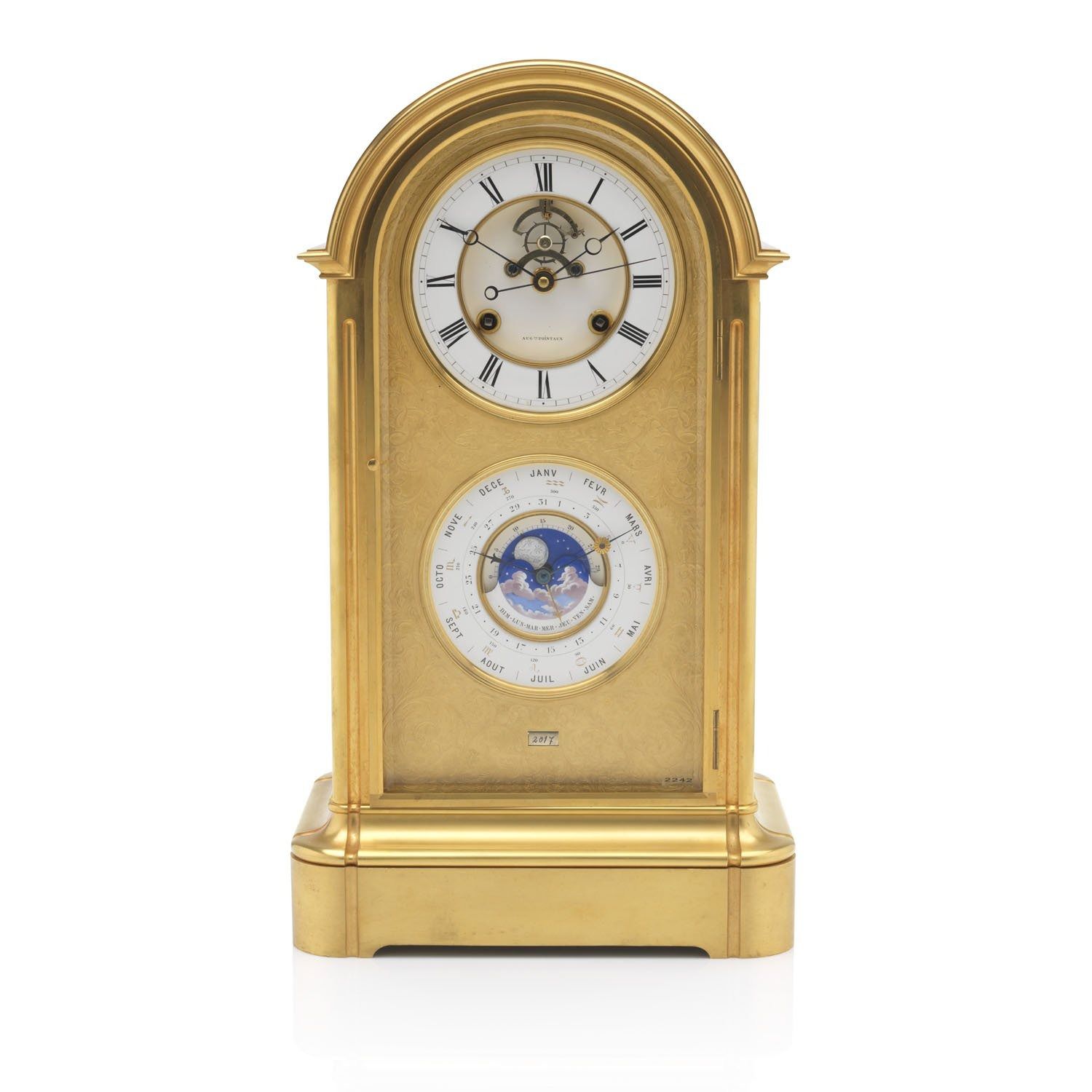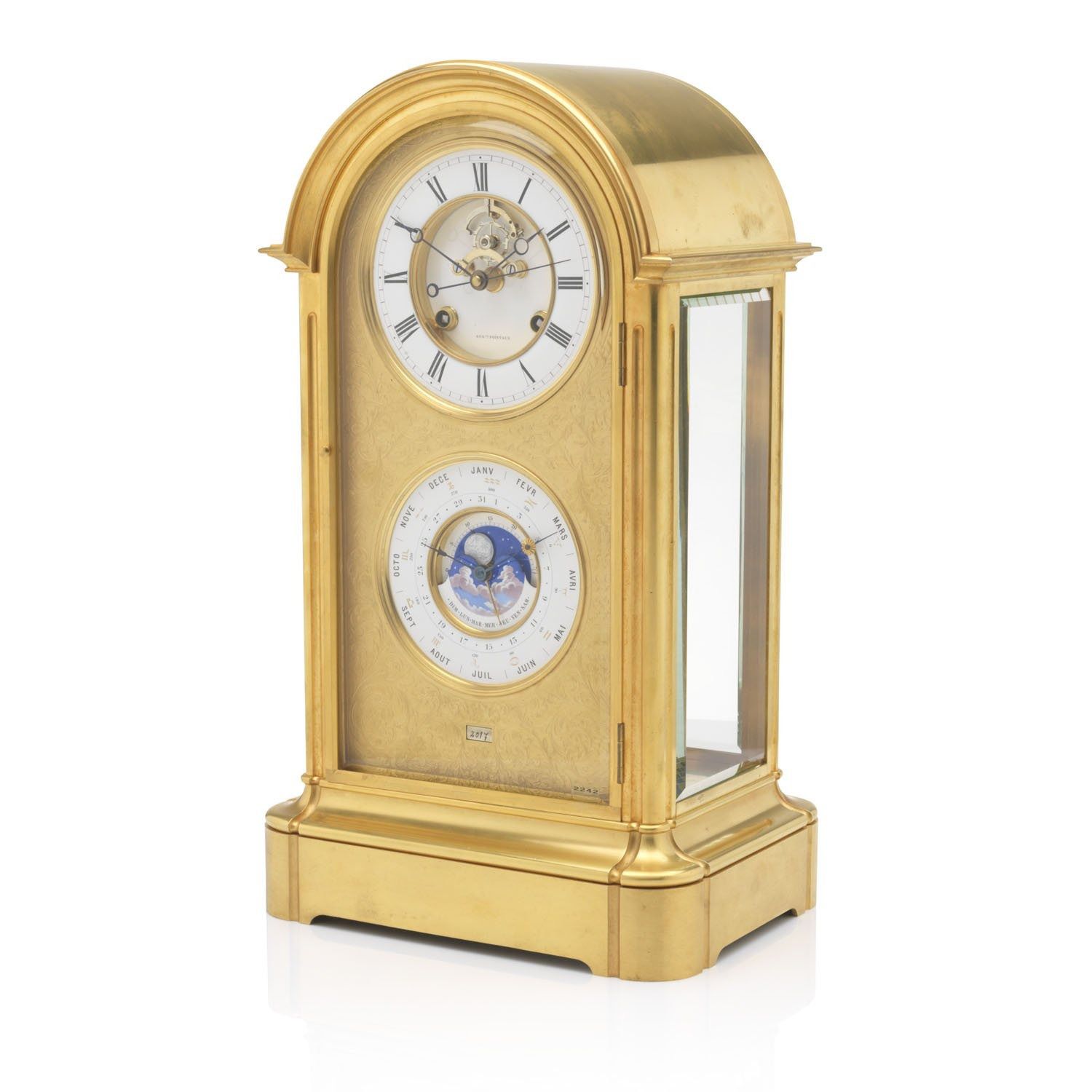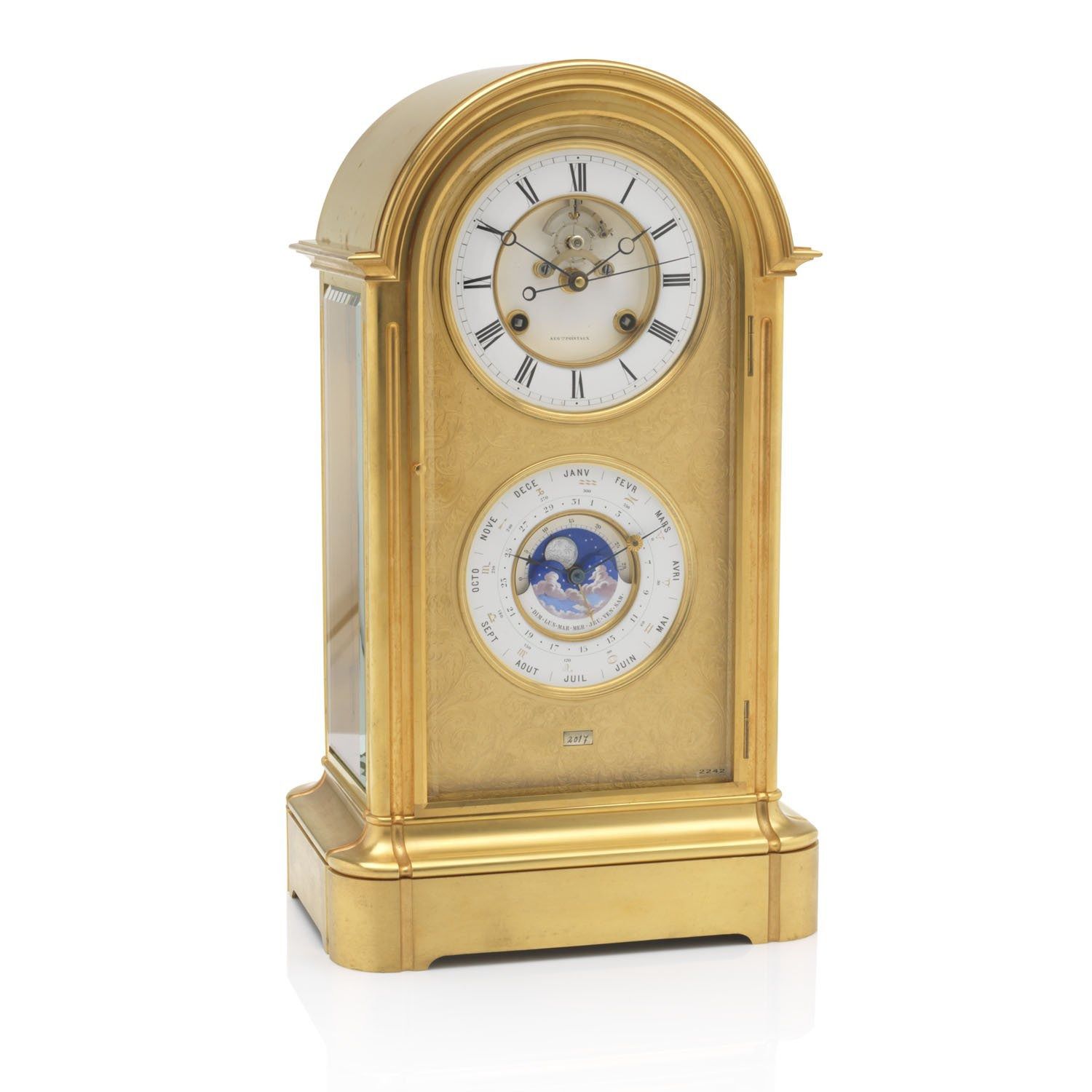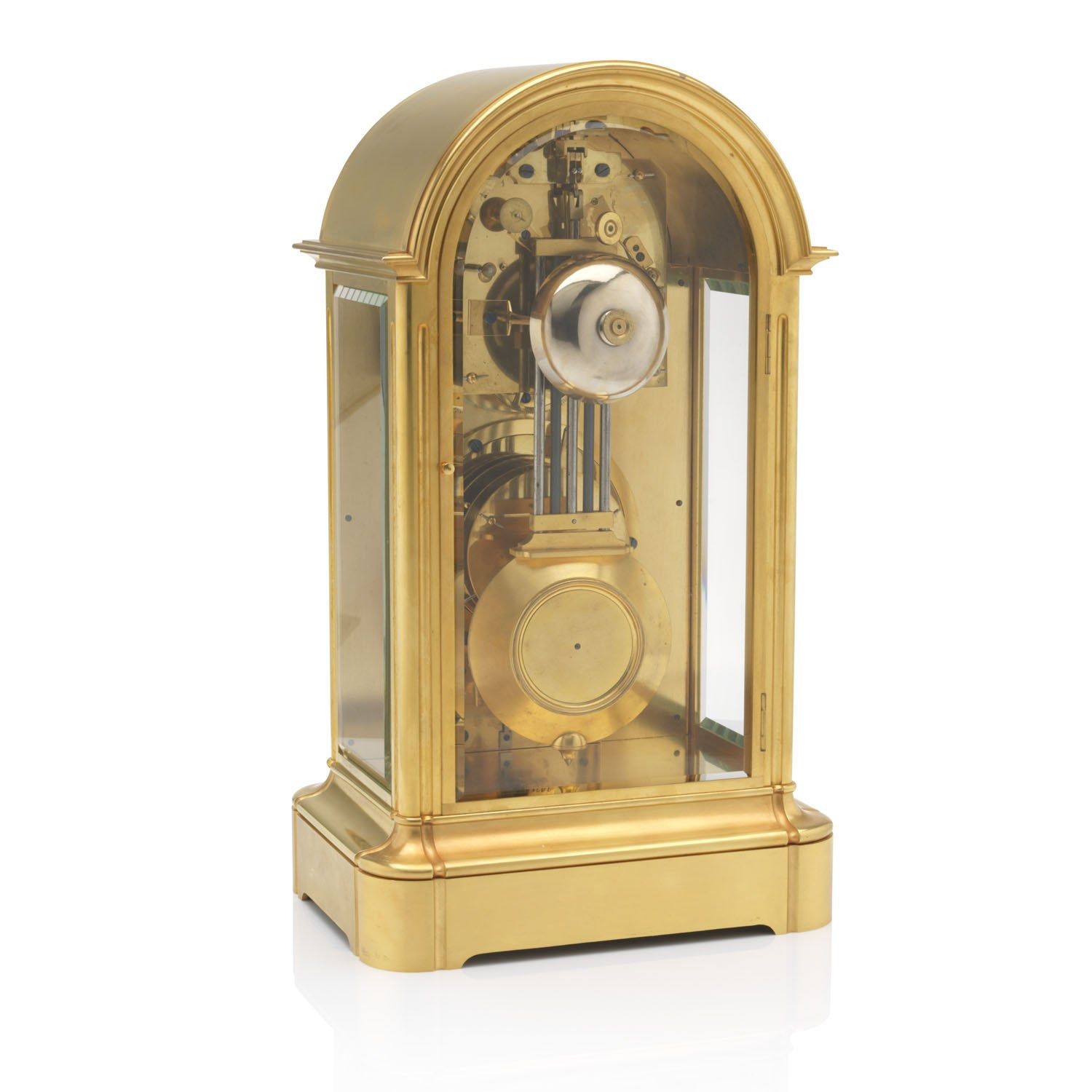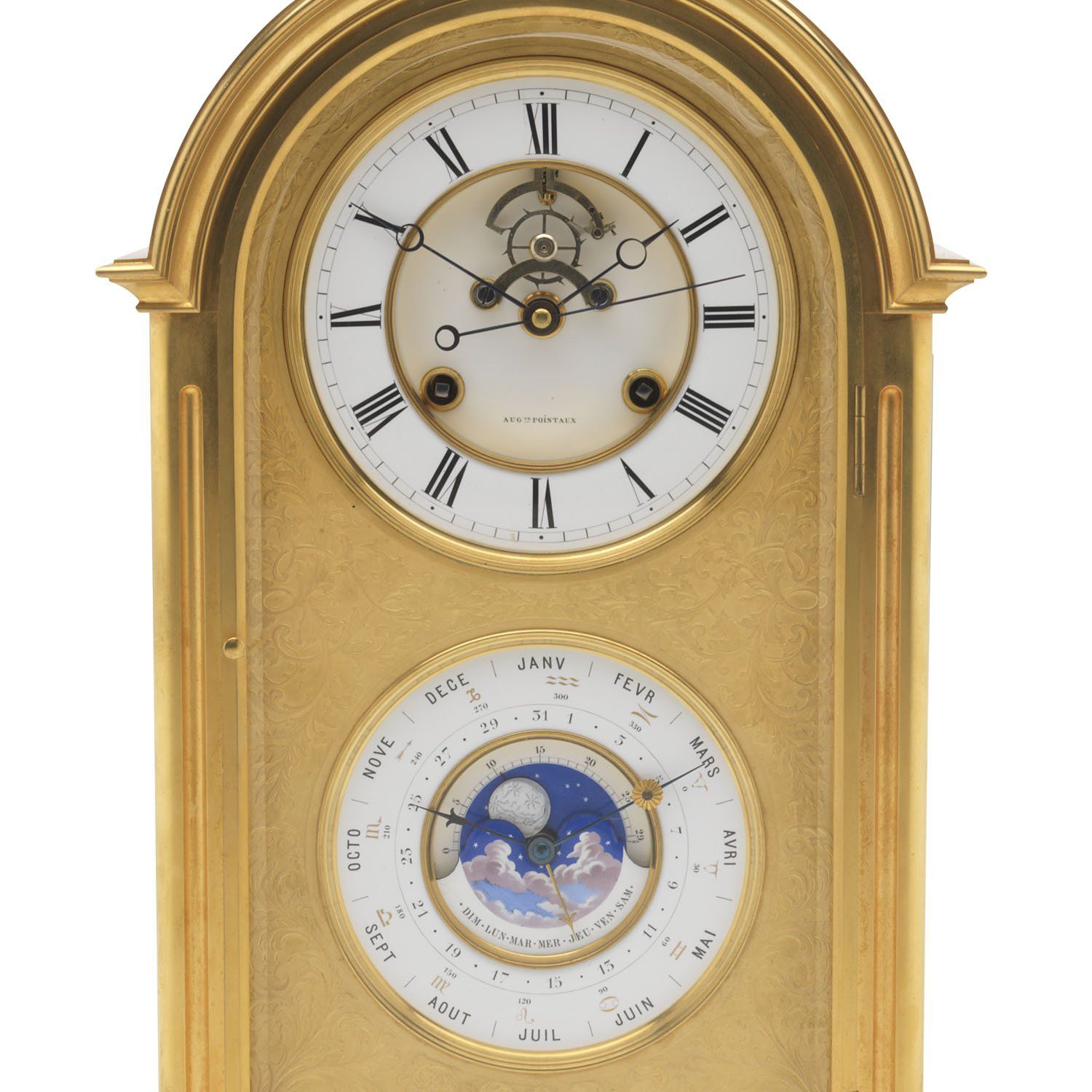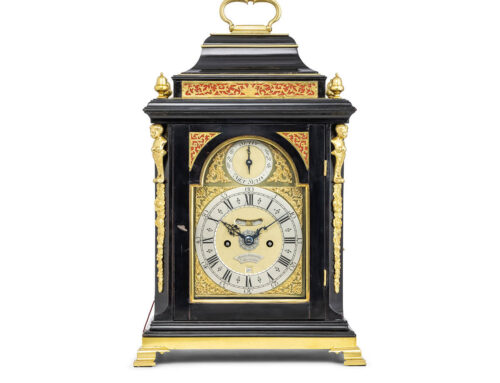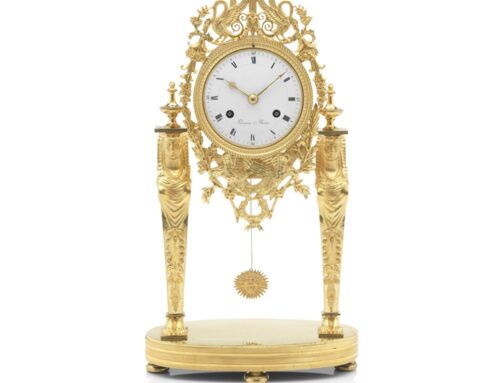French tableclock
Description
Perpetual calendar on a clock
French gilt-brass table regulator
by AUGUSTE POINTAUX, c. 1860.
Case
The austere gilt-brass case is arched and has a glazed doors to the front and back. The sides are glazed too, so that the movement is almost entirely visible. The whole rests on a moulded base.
Movement
The clock has a spring-driven eight-day movement with most unusual escapement. It is visible on the dial and is a so-called coup perdu (‘lost beat’). It looks similar to a dead-beat escapement, but is different in that one pallet is hinged and skips a beat all the time. This allows the application of a seconds hand with a ¼-second pendulum, indicating half seconds. The maker has made use of a heavy compensation pendulum. The clock also has a striking train, which indicates the hours fully and the half hours with a single stroke on a bell.
Dial
The white enamel dial consists of two parts, the middle part being recessed. This part is signed by the maker in the following manner: AUG TE POINTAUX. The time is indicated by a pair of finely cut blued-steel Breguet hands. In addition the seconds are indicated by a central sweep counterbalanced seconds hand. Beneath the main dial is another dial indicating the moon phase and age, the months, the signs of the Zodiac, the date of the month, and the day: a perpetual calendar.
The maker
E. Louis-Auguste Pointaux (1809-1885) had his workshop in Paris. He became famous for making table and mantel clocks with his variant of the coup perdu system. He exhibited his work in London in 1852. His escapement was also used by other clockmakers, Leroy among others.
Features
| Origin | France |
| Period | 1860 |
| Height | 46.5 cm |
| Width | 27 cm |
| Depth | 19.5 cm |
| Reference | 02242 |
| Price | on request |
More information
Would you like more information about this object? Please contact us.

